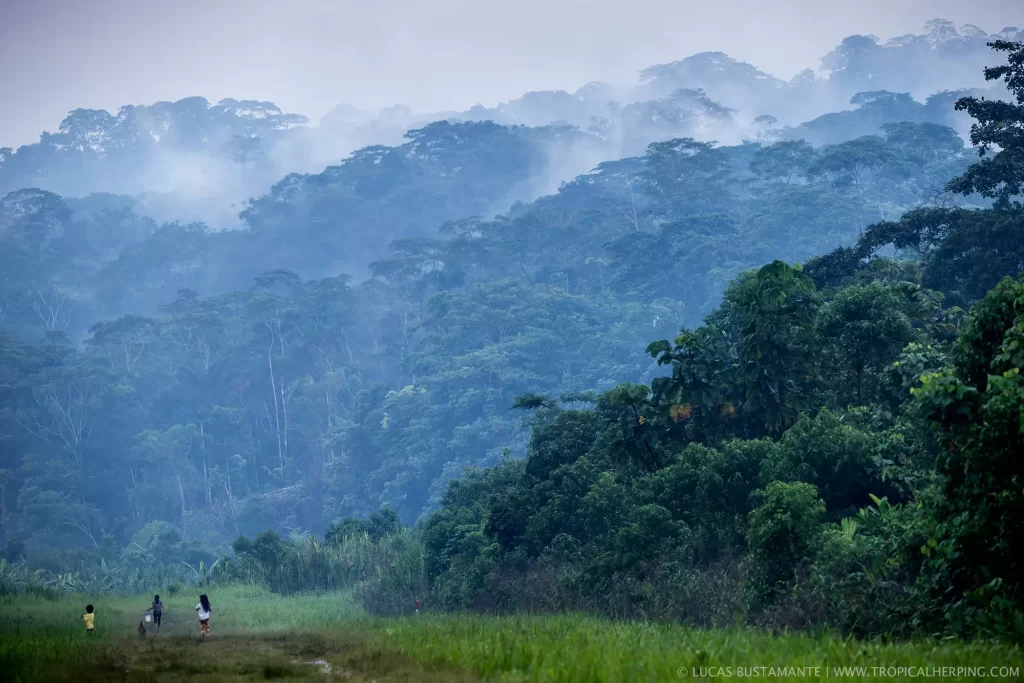July 31, 2024 Before You Go, Wildlife News
Understanding the weather and climate of your travel destination is essential for a comfortable and enjoyable trip. The Amazon jungle, where the Napo Cultural Center is located, boasts a consistent and predictable climate, characterized by high humidity and regular rainfall. This guide will help you prepare for the unique weather conditions you will encounter during your visit to the Amazon jungle.

General Climate Overview
The Amazon jungle’s climate is typically hot and humid year-round, with temperatures ranging from 75 to 95 degrees Fahrenheit. The dense foliage of the rainforest traps humidity, creating a sauna-like atmosphere. However, the screened-in cabins at the Napo Cultural Center, equipped with ceiling fans, provide a refreshing break from the heat after a day of exploring the jungle.
Seasonal Weather Patterns
The Amazon jungle experiences two primary seasons: the wet season and the dry season. Each season brings unique weather conditions and impacts the type of activities you can enjoy.
Wet Season (February – November)
During the wet season, the Amazon rainforest receives the majority of its annual rainfall, with monthly precipitation reaching up to 14 inches. The wet season is characterized by warm, humid conditions, with temperatures averaging around 75 degrees Fahrenheit. Frequent rain showers are common, and the increased moisture leads to higher insect activity, including mosquitoes.
Travel Tips for the Wet Season:
- Wear long sleeves and pants to protect against insect bites.
- Be prepared for some walking trails to be flooded. Canoes are used to navigate these areas, ensuring that you can still explore the jungle.
- Pack waterproof gear to stay dry during sudden rain showers.
Dry Season (December – February)
The dry season in the Amazon is relatively less wet, with monthly rainfall averaging around 7 inches. This season sees a reduction in standing water, leading to fewer insects and more accessible walking trails. However, temperatures during the dry season can soar, with daily averages nearing triple digits.
Travel Tips for the Dry Season:
- Despite fewer insects, it’s still advisable to wear long sleeves and pants for protection.
- Take advantage of the accessible trails to explore deeper parts of the jungle.
- Stay hydrated and wear breathable clothing to manage the higher temperatures.
Preparing for Your Trip to the Amazon Jungle
Packing appropriately for your trip to the Amazon is crucial to ensure comfort and safety. Here are some essentials to consider:
Clothing:
- Lightweight, breathable clothing for hot and humid conditions.
- Long sleeves and pants for insect protection.
- Waterproof jacket for unexpected rain showers.
- Sturdy, waterproof hiking boots for navigating wet and muddy trails.
Gear:
- Insect repellent to ward off mosquitoes.
- Sunscreen to protect against the intense tropical sun.
- Reusable water bottle to stay hydrated.
- Binoculars and a camera to capture the incredible wildlife and scenery.
Ecuador’s Diverse Climate
One of the remarkable aspects of Ecuador is its diverse climate, which can change dramatically within a single day’s journey. Your trip may include visits to various regions, each with its unique weather patterns.
Guayaquil:
- Dry season (April – December): Warm, sunny days with highs in the 80s and lows in the 60s.
- Wet season (December – April): Humid temperatures reaching the 90s during the day, with nights rarely dipping below 70 degrees.
Quito:
- Enjoys a spring-like climate year-round.
- Morning and evening temperatures in the 40s, daytime highs in the 60s and 70s.
- Pack a mix of clothing, including a rain jacket, sweater, shorts, and long pants.
Experiencing the Amazon at Napo Cultural Center
The Napo Cultural Center offers an immersive experience in the Amazon jungle, with activities tailored to the unique weather conditions of each season. Whether you’re canoeing through flooded trails during the wet season or exploring accessible paths in the dry season, the center provides an unparalleled opportunity to connect with nature and learn about the rich biodiversity of the Amazon.




